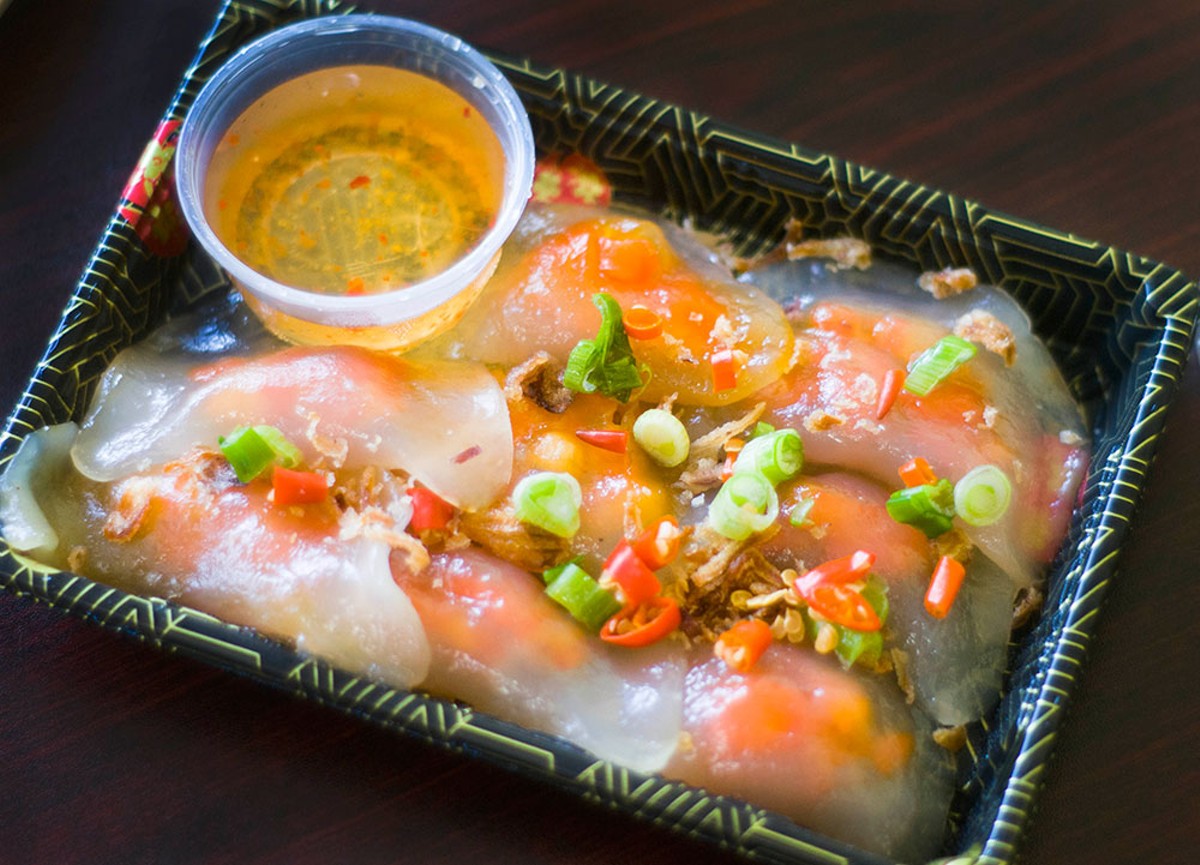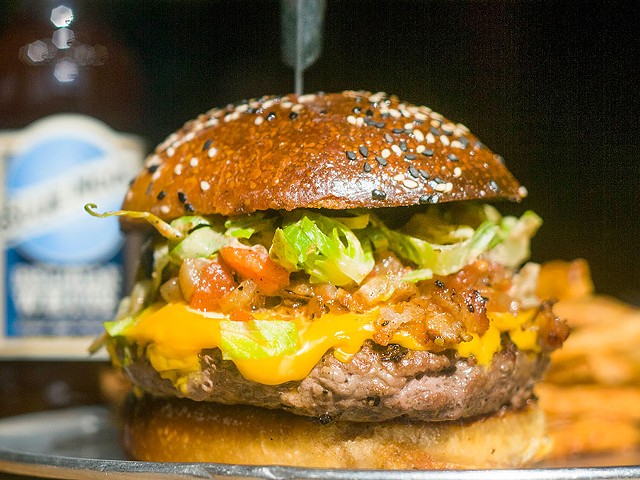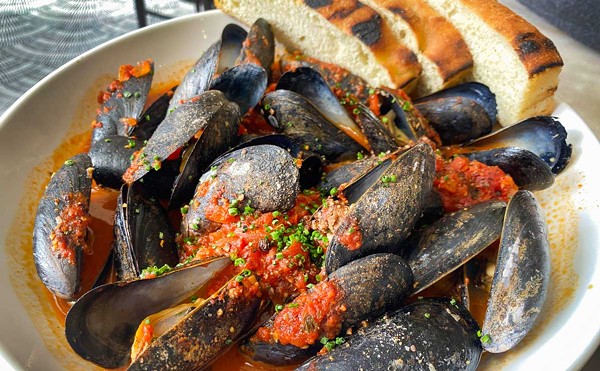Le Banh Mi's small space on Dequindre Road just north of 12 Mile is always a Vietnamese sandwich shop in name, if not in practice. A few years ago I dropped by for a banh mi, and though the sign out front still read "Le Banh Mi," a guy inside informed me that the soup du jour was no longer pho — he was preparing puchero and other Filipino dishes.
Though my Filipino meal was delicious, I didn't return for more than a year, and by that time the Filipino folks were gone, and pho once again filled the cauldron. Through the transitions, the sign always read "Le Banh Mi." OK.
But just as some restaurant locations appear cursed, the shop at 29141 Dequindre seems to be blessed — I've never witnessed a second-rate meal roll out of its kitchen. The specialties in this incarnation are the banh mi — the Vietnamese sandwich invented as a product of the country's French colonial rule — as well as smoothies, milk tea, and desserts. However, some of the best eating here is found not on the menu, but in the premade "grab 'n' go" items sitting on the counter. It can be a challenge figuring out exactly what you're grabbing as the nice old lady and other two folks who run Le Banh Mi speak next to no English. (There's actually a complaint on Yelp about the shop owners not speaking enough English. While it's a barrier, maybe go to KFC if that's going to be such an issue that you feel compelled to give them a negative review.) But the owner did communicate that she's from the central Vietnamese city of Hue, and she says she makes her food the way you'll find it there.
While an explanation of some of the dishes would be helpful, it's not essential — everything looks appealing. There doesn't appear to be much of a pattern to what's available, though it's often items that are rare or otherwise impossible to find in metro Detroit. That includes the banh bot loc, a colorful dish of what are essentially clear dumplings holding salty pork and shrimp. Hot, bright red chili peppers that provide a sharp bite are mixed in the dish with crunchy green onions and fried shallots, and each bite should be dipped in and enhanced with a sweet nuoc cham sauce.
Also off the counter is the xoi man, which could be described as a deconstructed banh mi. A pile of sticky, glutinous rice arrives under slices of Chinese pork that are like sweet hits of pepperoni. That's accompanied by a tangle of pork floss, a small bundle of green onions, and salty, white tabs of pork called cha lua that look like pieces of tofu. Individually, there's enough funk in each ingredient to stop some Americanized palates in their tracks, but each working in concert makes the xoi man quite tasty.
Two other regulars on the counter are the banh chung and banh gio. These are colloquially known as Vietnamese tamales or dumplings, and the banh chung is a hefty brick of sticky rice and mung bean encasing a nugget of crumbled, peppery pork. A fragrant, deep green banana leaf holds the whole package together while imparting a tea-like flavor in the rice and mung. The black pepper bite is heavy, but works wonderfully with the salty dish.
The similar banh gio is more dumpling-like, consisting of a dough made of flour, starch, and broth. Like its cousin, salty and peppery pork crumbles are encased in the banh gio, along with mushrooms and shallots, though the shape is more pyramid-like than brick-like. Both are priced to move and fill at $2.95 each.
On the menu, the place to start at Le Banh Mi is probably the banh mi. Though all were solid, far and away the best is the thit nuong, or grilled pork with a flavor driven by lemongrass and garlic. All sandwiches also hold big sprigs of cilantro, crunchy pickled carrot shreds, cucumber slabs, jalapeños, pickled daikon, and mayo. Another solid option is the sardine banh mi, which consists of small fish hunks in a garlic-tomato-chili sauce that — if you like sardines — is a must. If you're not ordering the grilled pork dac biet or sardines, then the slightly more mellow meatball banh mi is the better option.
Despite the language barrier, the woman who runs Le Banh Mi urged me to try bun bo hue, a specialty in her hometown. And her version of it hangs with others in metro Detroit, though it's slightly less spicy. That could be a good thing if you're new to the soup, which can be intimidating with its broth of swirling deep reds produced by coagulated pig blood, pig knuckles, and sate, a chili and garlic oil that is responsible for much of its bite. But that isn't to say it's a bowl of fire. The flavor of all that blood works well with the garlic, oil, and lemony base, as well as accompanyies the pile of fresh basil, mint, and cabbage.
Le Banh Mi's drinks and desserts are sort of interchangeable. Something like the red bean shake — azaki bean mixed with sugar, condensed milk, ice, and tapioca pearls — will satisfy a sweet tooth, and ditto for the milk tea, which is super sweet iced black tea served with tapioca pearls. If you must flirt with diabetes, try the sam bo luong, a sweet, cold Vietnamese and Chinese soup made with a sugary broth, gingko nuts, seaweed, mung beans, black dates, pearl barley, longans, and more. The che nuoc is similar, but perhaps a better, smoother version with azaki beans. If dessert soup isn't your thing, try the che bap, a Vietnamese sweet corn pudding mixed with sweet coconut milk.







